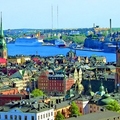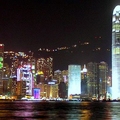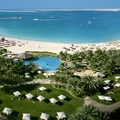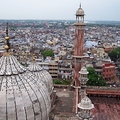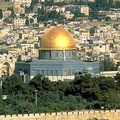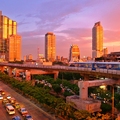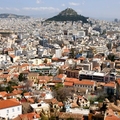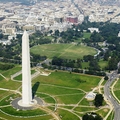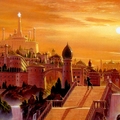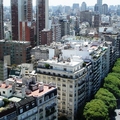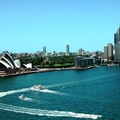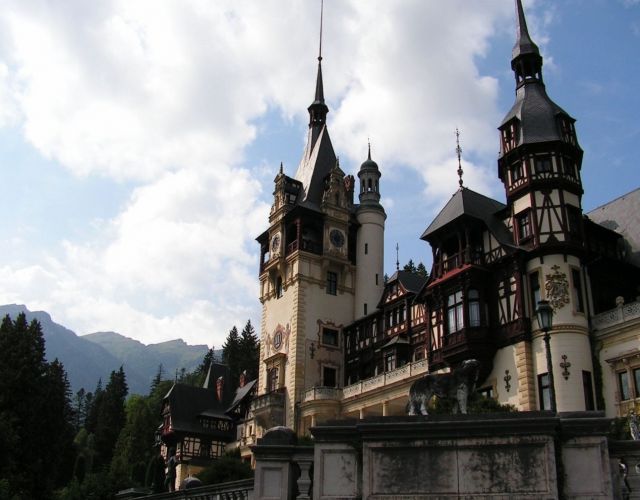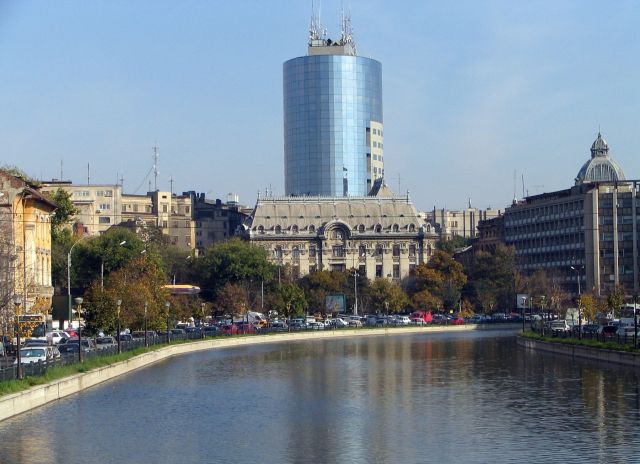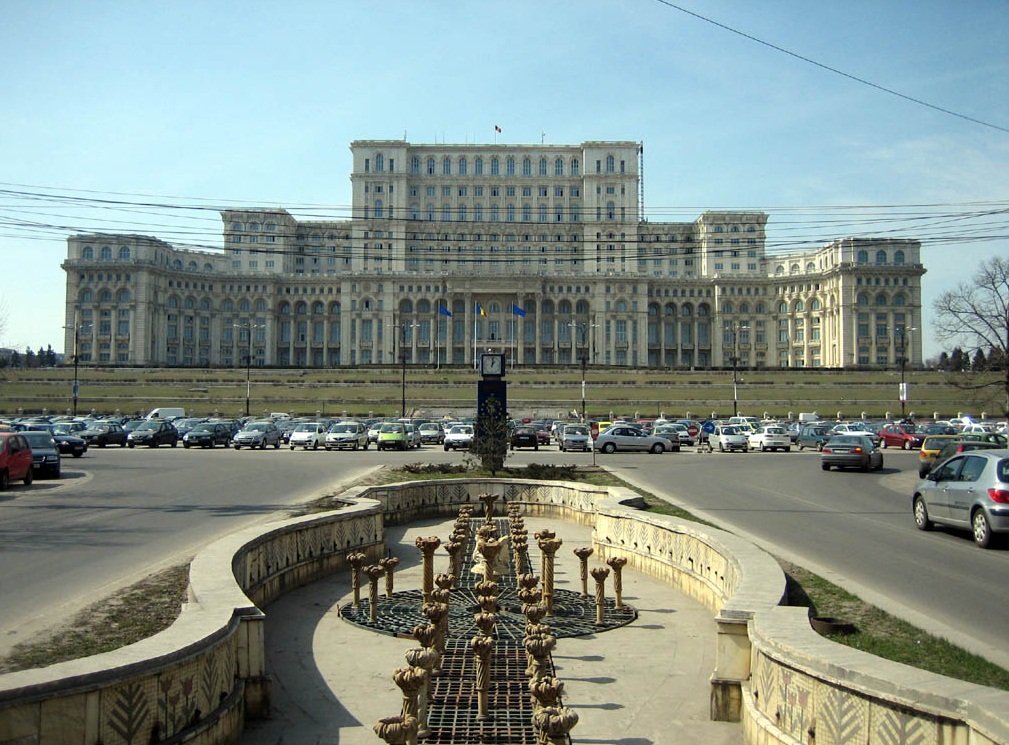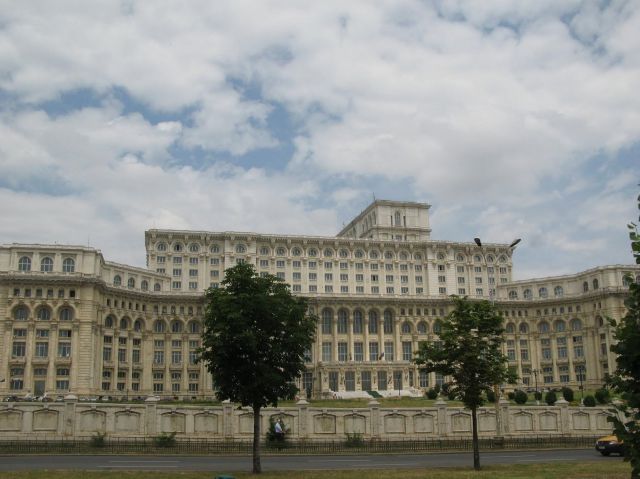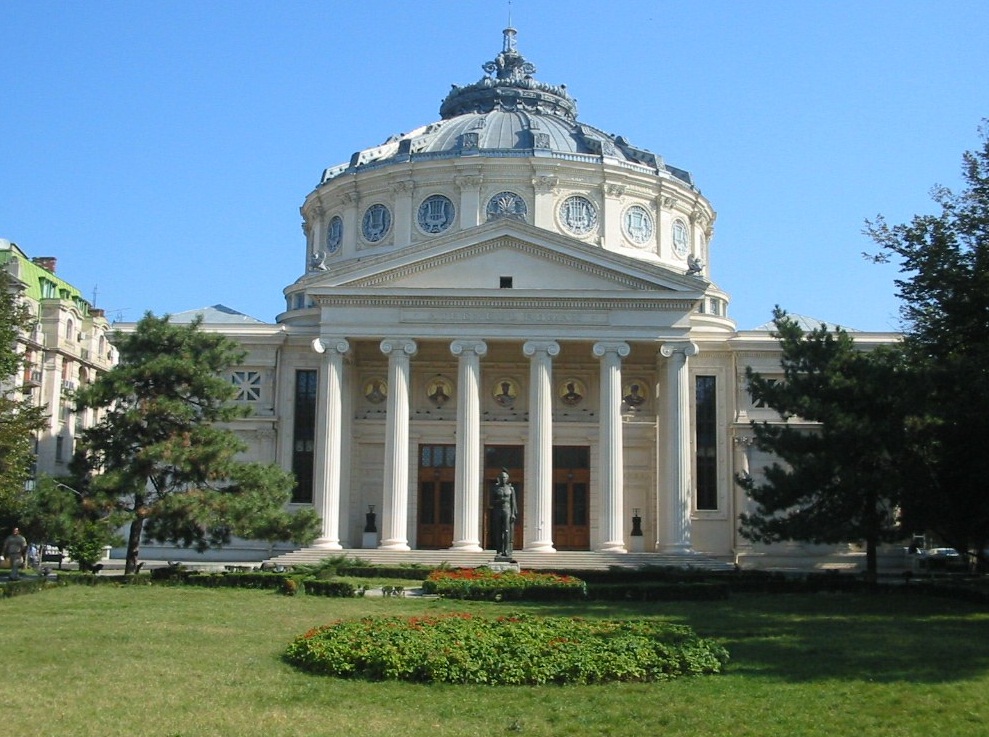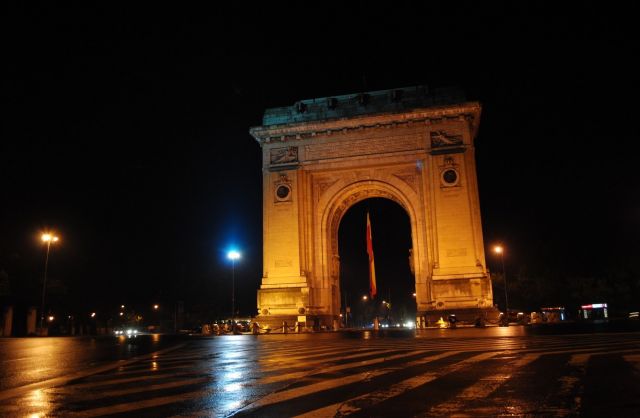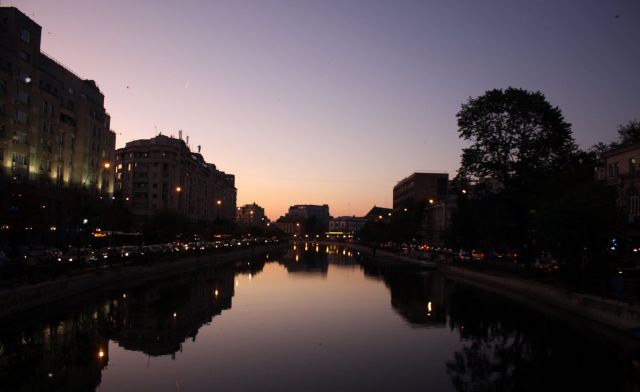Destinations / The best capital cities in the world / Bucharest
Bucharest
About Bucharest
Bucharest is the capital of Romania and at the same time, the largest , the most industrial and commercial center of the country. With a population of about 1,944,367 inhabitants (est. on January 1, 2009 ) ,Bucharest is the sixth city in population in the European Union . However, Bucharest gathers over three million people daily, and experts predict that over the next five years, the city will exceed four million. The settlements around the city, which will be part of the future Metropolitan Area , influence this fact too, its total population being about 430,000 inhabitants. The first mention of the town appears in 1459 . In 1859 it became the capital of Romania. Since then the city undergoes constant changes in its artistic, cultural life and media . Between the two world wars, the elegant architecture of the elite Bucharest brought the nickname of "Little Paris". Currently, the capital has the same administrative level as a county and it is divided into six sectors .
Geographical location and topography
Bucharest is situated in the southeast part of Romania, between Ploiesti and Giurgiu. The city is situated in the Vlasia Plain , part of the Romanian Plain . Baragan is in the east and Găvanu Burdea Plain is in the west. In the south Bucharest is bordered by the Burnaz Plain. The Bucharest Plain was formed by the gradual withdrawal of Quaternary lake, as a result of movements raising from the Carpathians and the Sub-Carpathians and intense alluvial movements. The upper Pleistocene alluvial deposits were covered with loess and loess deposits, and the early Holocene was completely extended. Meanwhile rivers extended their courses and enhanced their linear erosions in thick blanket of loess, thus fragmenting the plain.
The Bucharest Plain has an altitude between 100-115 m in the north-west and 50-60 m in the south-east in the meadow of Dambovita. The city itself is between 58 m and 90 m altitude. Over 50% of its area falls within the range of 80-100 m hipsometric slopes. Fragmentation is more pronounced in the eastern half, where they reach 1-1,5 km/km2. The relief of the plain consists of a sequence of fields (inter-) and valleys (with terraces and meadows) that succeed from the north to the south: The Baneasa field (or Otopeni),in the north of the Colentina Valley has an altitude of 90-95 m and its density greater fragmentation in the south is of 0.5-1 km/km2. The Colentina valley is asymmetric (due to the steeper slope right) and strongly meandering. At the entrance of Bucharest it has a width of 0.5 km, and an output of 1.5 km. There are two terraces along the low (2-3 m and 4-6 m) witnesses separated from the fields . The meadow is broad and well- developed on both sides, because work was covered by water regulation reservoirs. It retains a few Popina forms of islands: Plumbuita, Ostrov, Dobroesti and Panteleimon. The Colentina field (or Giuleşti-Floreasca), between the Omonia and the Dambovita River, covers about 36% of the City, with a slight tilt in the direction NW-SE (between an altitude of 80 and 60 ).
The fragmentation density has values between 0 and 1 km/km2. The Dambovita Valley is carved into loesses, with the right bank steeper, and high (10-15 m) and the left lower (4-5 m upstream and downstream 7-8 m). The terraces are developed predominantly on the left side of the river. Arranging the course, there were peaks in the meadow, Popina, reindeer, sand banks, islands and steep banks. Currently there are still a number of peaks (Uranus-Mihai Voda) and Popina (Metropolitan Hill, Hill Radu Voda heap Mare). The Cotroceni-Berceni field (or Cotroceni-Văcăreşti) runs from the Dambovita valley in the north, and the Sabar River in the south.
Waters, flora and fauna
Bucharest is situated on the banks of the Dambovita river , which flows into the Argeş , a tributary of the Danube. Several lakes lie along the Colentina river , in the city, and Lake Herastrau, Floreasca , Tei and Colentina . There is a lake in the park Cismigiu . This lake, formerly in the old medieval town pool is surrounded by the Cismigiu Garden , inaugurated in 1847 by the German architect Carl FW Meyer. In addition Cişmigiu in Bucharest and other major parks there: Herastrau Park (the Village Museum ) and the Botanical Garden (the largest in Romania comprise over 10,000 species of exotic plants ), Youth Park , Park Alexandru Ioan Cuza (known and that Titan Park or Park IOR ), and many smaller parks and green spaces for district mayors.
Climate
The climate in the capital is specific to Romania. It is temperate-continental . Specific seasons are: winter , spring , summer and autumn . Winters are relatively mild in Bucharest with little snow and relatively high temperatures, while in recent years, summers are very hot, very hot (high temperature up to 40 degrees in the shade) and little precipitation.
History
The legend says that Bucharest was founded by a shepherd named Bucur. According to another version most likely, Bucharest was founded by Mircea at the end of the XIV century . Paleolithic and Neolithic culture is attested on the banks of Dambovita and Colentina . In 1800 BC. AD some evidence of communities in Dudesti , Lake Tei and Bucharest areas appeared . The archaeological excavations indicate the passage of this area through a process of development of the Bronze Age and until 100 BC. BC , during which Herastrau , Radu Voda, Lake Linden , Panteleimon , Prince Michael Hill , Popesti-Leordeni andPopesti-Novaci areas were populated by the Indo-European ( Geto-Dacians ).
The settlement is documented on 21 September 1459 in a document issued by Vlad Tepes , the ruler of the Romanian Country , which strengthens an estate of some landowners. The Dambovita citadel, as it appears in the first years of the city had a strategic role. Soon Bucharest was stated and elected as a royal residence on October 14th 1465 by Radu the Handsome . In 1659 , under the reign of Gheorghe Ghica , Bucharest became the capital of the Romanian Country , under the Turkish order to have a capital in the plains and near the Danube, easier to control compared to Targoviste. The first roads were paved with river stone ( 1661 ), the first institution of higher education, the Royal Academy ( 1694 ) was established and Mogosoaia Palace ( Constantin Brancoveanu , 1702 ) was built, which today is the Museum of Art feudal Brancovan building . Bucharest began to grow economically . The remarkable number of craftsmen, who formed several guilds (of tailors, shoemakers, furriers, drapers continued the modernization of the city. The first manufactures and public fountains were created and the population grew continuously bringing people from all over Wallachia ( in 1798 it indicated 30,030 people, while in 1831 it numbered 10,000 houses and 60,587 inhabitants).
Slowly a number of institutions of interest appeared : National Theatre , Cismigiu Garden , Cemetery Serban Voda , Academic Society in Bucharest ,Bucharest Philharmonic Society , University of Bucharest , Gara de Nord , Grand Hotel du Boulevard, newspaper universe, cafes, restaurants , Botanical Garden of Bucharest , the Romanian Athenaeum , the National Bank , cinemas and innovations in technology and culture took place. Bucharest was up at the establishment of the communist regime in Romania residence. It was called "Little Paris "because of its resemblance with the French capital, but it lost its charm during communism. Lately, real estate development raised concern about the fate of the historic buildings of the city, especially those of the historic center.
Architecture
The medieval substance of Bucharest was seriously affected over the time by the destruction and by fire. Moreover, the city tragically lost a number of monuments, especially churches, during the campaign of "planning" started in the last century by Nicolae Ceausescu . From the medieval town vestiges of Dambovita Old Court (XV - XVI) and the Royal Church of the Annunciation , which probably date from the time of Mircea Shepherd ( 1545 - 1554 ) were preserved. The church has a plan conch, its nave is highlighted by a tower. The Moldovan facade betrays some influence, but its made up of rows of brick masonry alternating with portions covered by plaster, imitating the stone facing, which already belongs to the typical architecture forms of the Romanian Country . The church house murals of Constantin Lecca and Misu Popp in 1852 were preserved in the building . The tower was replaced in 1914 . This style of architecture prevailed in the early twentieth century in Bucharest, despite various current secessionist . Thus, the former Post Office Palace, now the National Museum of History , built in 1900 by architect Alexandru Savulescu ( 1847 - 1902 ), has a massive order porch, a rustic parament with various decorative elements due in part to the Renaissance and part classicism .
A similar concept behind the former is the Palace of Parliament ( 1907 ), today the Patriarchal Palace. Bucharest City Hall building , built between 1906 and 1910 by Petre Antonescu , shows retrospective trends , aimed to a revival of the national traditions in architecture, especially Brancoveanu style. The ideal of a school of a non-romanian architecture was noticed in the work of Ion Mincu, for example in "buffet the road" on the Kisseleff road in 1892. The Moldavian architectural tradition inspired the architect Nicolae Ghica-Budesti , in the ethnographic museum, the national art, decorative art and industry , today the Romanian Peasant Museum , built between 1912 and 1939 . Neo style but could not overcome the French canon, represented at the first decades of the century by the architect Nicholas Nenciulescu . The Royal Palace ( 1,932 - 1 937 ), now the National Art Museum of Romania ,is a construction consisting of a central body and two wings that expose a not so strict neoclassicism, and the Arc de Triomphe , the work of the architect Petru Antonescu (1922 and 1935-1936). The Telephone Palace on Calea Victoriei with its small skyscraper –style was built in the 1930 emerging the first-century modernism.
Some buildings in the center representing the new powers, such as Scanteia House (1956) or the Romanian Opera ( 1953 ) were built in the center in the 50s of the twentieth century. In the first decade of the communist dictatorship, the city area increased significantly with the construction of new residential neighborhoods, which were partially character of a -satellite city : White Marsh, Camp Road, Floreasca Jiu-Eagle, Berenci Way Griviţei. Between the 1968 and 1970 the Intercontinental Hotel was built , until 2004 the tallest building tower in Romania and the National Theatre , whose modernism was then denatured by Ceausescu's orders, the facades, the arcade was completed . The age of Nicolae Ceausescu brought serious changes in the urban structure of the capital. A new presidential palace was built and the Victory of Socialism Boulevard was the cost of destroying the old neighborhoods Uranus, Izvor, Rahova and Antim.
Main attractions in Bucharest
And so the most interesting part of the city for any visitor goes on two axes, between the Union Square and the Victoria Square on the one hand and the Rosetti Square and the Palace Hall on the other hand. The most interesting points in this area are:
The Romanian market
Here you find the best clubs in Romania and even of Europe such as The Office, Planters, Down Town, The Rooms, restaurant and shops. It is also an important public transport. Other points of interest are: Academy of Economic Studies, British Council, Market Lahovari Park icon.
Cismigiu
In the current place of the park, there was a large pond, called Dura Merchant's pool in the days of Alexander Ypsilanti. The actual name was given to the largest fish “ cismele” ( cismigiu) found there. In 1847 under the guidance of the Viennese landscaper Carl FW Meyer the planning work began and in 1854 it was officially opened. The garden impresses today with flowers, special collection of material arboretum. There are some examples declared protected trees. Cismigiu is never empty, the search for cool summer, vegetation dotted with boats and the lake or the winter becomes a natural ice rink.
Amzei Market
It is one of the largest markets for fresh fruits and vegetables in Bucharest known mainly as the place where you can buy the most beautiful flowers in the capital. The Amzei Market is the place to go shopping because here you can find two supermarkets open 24 hours / day, 7 days. Fresh food and various original souvenirs can be found in the market too. Other points of interest are: a beautiful synagogue and the Studio Cinema.
The Victoria Avenue
It is one of the largest and full of history boulevards in Bucharest. A 30 minute walk from the Victory Square will lead the way to the building of the Romanian Government and the largest office buildings in Romania, Grigore Antipa Museum of Natural Sciences and the Romanian Peasant Museum to pier Dambovita, the river which crosses Bucharest from west to east. Along the way, admiring the old buildings of the early twentieth century will make you understand why Bucharest was called Little Paris.
The Revolution Square
It was called the Revolution Square because the signal of the Romanian Revolution of 1989 in Bucharest was given here, which signified the end of Ceausescu's communist regime. As a proof you can see the traces of bullets on some of the buildings and demonstrations and struggles that were given here in December 1989. It is one of the most beautiful and most loaded areas from the architectural point of view. Here you can admire the Athenaeum, a beautiful building where concerts and events are held , the Royal Palace which houses the National Art Museum and numerous exhibitions, the National Library University and the” Hilton” Hotel.
Victory passage
This place should not be missed under any circumstances for at least two reasons: because it still keeps the flavor and the interwar period which is the most beautiful gateway to the historic town. Here you can drink coffee or tea, you can eat or smoke an Egyptian hookah.
The University Square
It is known as 0 km of Bucharest and it is the most famous meeting point in the course of events in the 90s, being surrounded by beautiful buildings of the University of Bucharest, National Theatre or the University of Architecture of Bucharest. It is also an important hub of public transport, the place where the largest arteries and where to go to the five major outputs in Bucharest: A 1, A 2, DN. 1, DN 5, E85.
The Historical city
It must be one of the points that cannot be dropped during any short visit in Bucharest. It lies between the University Square, the Union Square and the Victoria Avenue. The most important points of interest are the Stravropoleos Monastery, the Inn's Inn Court glassware, plastic or the Court Fund of the old palace ruins of Vlad Tepes (known as Dracula) as well as other Roman rulers. Strolling along the streets full of history you will encounter art galleries, antiques, you will reset at cafes and at small shops where you can buy authentic Romanian souvenirs.
The Union Square
It is the place where you can leave for the Palace of Parliament known as the People's House, the largest building in the world after the Pentagon. Here you can find one of the best places for shopping and even the country of Bucharest, the Union Shopping Centre.
The Cismigiu Garden
It is the oldest and the most beautiful garden in Bucharest. You can drink coffee, tea or beer, you can eat or you just walk in the shade of huge trees here. You can even have a walk by boat.
Herastrau Park
It is the largest park in Bucharest. It hosts exhibits and floral hosts cafes and restaurants as well as tennis courts or football. It is the hottest summer place in Bucharest.
Romania is a member of the European Union. Bucharest is full of embassies, hotels, restaurants, bars, public institutions and much more. If you visit Bucharest you will discover the city’s unique charm yourself. The most impressive, neoclassical facades, museums, buildings will give you the opportunity to explore the city and the rest of it.
Others The best capital cities in the world .
Others from The best capital cities in the world
Who doesn't wish for an exciting vacation or who isn't attracted by fascinating experiences? This poll provides comprehensive information about the best, most important capital cities in the world that we generally recommend as wonderful places to explore.
Let them be your starting point and consider these places might occur to you and suit your goals.
These are the most liveable,friendly and multicultural cities on Earth, with the most exciting cultures,with the most beautiful beaches, with the most lively nightlife and the most beautiful scenery.
Explore the cities and find out the best kept secret of each of them.
I'm sure you'll experience senses to the fullest intensity.

